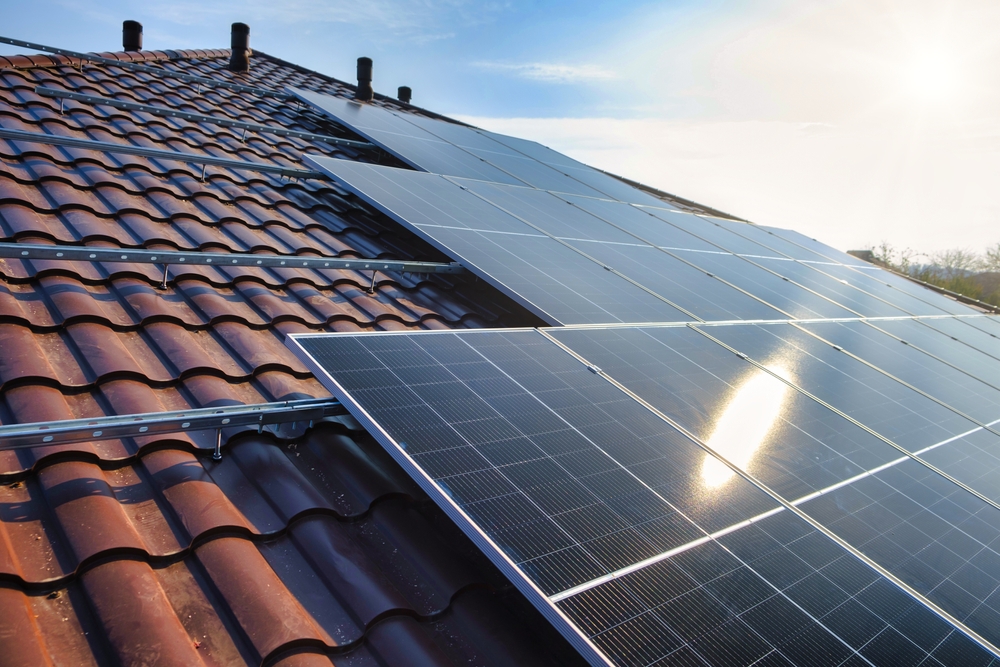
Thinking about installing solar panels for your home? Understanding the average solar panel output is crucial for making an informed investment decision.
A solar panel consists of photovoltaic cells that convert sunlight directly into electricity. When photons from sunlight hit these silicon-based cells, they generate an electrical current that powers your home and reduces utility bills.
Key Solar Panel Terms: kW, kWh, DC, and AC
Before exploring solar panel production, let’s clarify some important terminology:
- Kilowatt (kW): Measures the instantaneous power output of solar panels (1,000 watts)
- Kilowatt-hour (kWh): Measures energy consumption over time — this is how your utility bills track energy use
- Direct Current (DC): The type of electricity solar panels produce
- Alternating Current (AC): The type of electricity your home uses
Power vs. Energy: What’s the Difference?
Solar panel watts represent capacity at a given moment (like a car’s horsepower), while solar panel kWh represents the actual electricity generated over time (like distance traveled). The average wattage of a solar panel affects its total capacity and power output.
How to Calculate Solar Panel Output
To calculate solar panel output per day:
Energy (kWh) = Power (kW) × Sun Hours × Efficiency Factor
Where:
- Power is the panel’s rated solar panel kilowatt
- Sun hours are the average peak sunlight hours for your location
- Efficiency factor accounts for system losses (typically 0.75-0.9)
1. Solar Panel Output per Day Example
For a 300W panel in 5 hours of peak sunlight:
Energy = 0.3 KW per solar panel × 5 hours × 0.9 = 1.35 solar panel kWh per day
2. Solar Panel Output per Month Example
To calculate monthly production:
Monthly Energy = 1.35 kWh per day × 30 days = 40.5 solar panel output kWh per month
3. Solar Panel Output per Square Meter Example
For calculating solar panel power output per square meter:
Energy = 1,000 solar watts per square meter × 20% efficiency × 5 hours × 0.8 = 0.8 solar energy per square meter per day
This calculation shows how solar power per square meter varies based on conditions.
4. Quick Solar Panel Wattage Calculation
For a quick estimate of your potential solar output:
- Find your region’s average peak sun hours (typically 4-7 hours in the US)
- Multiply by your panel’s watts per solar panel
- Apply a system efficiency factor (typically 0.9)
Example calculation: 400W panel × 5 sun hours × 0.9 = 1,800 Wh = 1.8 kwh per solar panel per day
Solar Panel Production by Wattage
| Solar Panel Wattage | kW | Daily solar panel kWh output | Monthly kWh solar panel | Yearly solar energy output |
| 100W | 0.1 | 0.45 | 13.5 | 164 |
| 200W | 0.2 | 0.9 | 27 | 329 |
| 300W | 0.3 | 1.35 | 40.5 | 493 |
| 350W | 0.35 | 1.58 | 47.3 | 575 |
| 400W | 0.4 | 1.8 | 54 | 657 |
| 500W | 0.5 | 2.25 | 67.5 | 821 |
Assumptions: 5 peak sun hours daily, 90% efficiency. PV panels are rated up to these wattages under standard test conditions.
What Affects Solar Panel Energy Production?
Several factors impact solar panel how many watts it effectively produces:
Amount of Sunlight / Location: Southwest US receives significantly more sunlight than Northeast regions. An average kWh solar system in Arizona produces approximately 30% more energy than in Washington.
Roof Direction and Angle: South-facing roofs with 30-40 degree angles typically maximize the average output of solar panels in North America.
Shading and Obstructions: Even partial shade can dramatically reduce production. Just 10% shading can reduce the power of solar panels by up to 50%.
Panel Materials and Efficiency: Most residential panels have 15-22% efficiency ratings. Higher efficiency panels produce more solar panels power output in the same space.
Monocrystalline vs. Polycrystalline: Monocrystalline panels offer higher efficiency (18-22%) but cost more, while polycrystalline panels provide lower efficiency (15-17%) at more affordable prices.
Temperature and Weather: Surprisingly, panels perform better in cool, sunny conditions than extreme heat. Most panels lose efficiency as temperatures rise above 77°F, reducing solar panel watts per hour output.
Typical Solar Panel Output
How Many Watts Does a Solar Panel Produce?
Standard solar panel wattage today ranges from 300W to 500W, with premium models reaching 600W. The typical solar panel wattage for American homes is approximately 370W in 2025. When considering what is a good wattage for solar panels, most homeowners find that 350-400W panels provide an optimal balance of efficiency and cost.
How Much Electricity Does a 1 kW System Produce?
A 1kW solar system in the United States typically produces:
- 4-5 solar panel kWh per day
- 120-150 kWh per month
- 1,400-1,800 kWh per year
This shows how solar panels watts directly impact energy generation.
Typical Output by System Size and Location
For an average home solar panel output producing 10,000 kWh annually:
- Southern states: 6-7 kW system
- Middle states: 7-9 kW system
- Northern states: 9-11 kW system
Seasonal Output (Winter vs. Summer)
Solar production by month varies significantly:
- Summer: 30-50% above annual average
- Winter: 30-50% below annual average
Are High-Output Solar Panels Worth It?
Panels with high wattage of solar panels (400W+) typically offer these advantages:
- Fewer panels needed for the same total solar panel output
- Less roof space required (smaller solar panel size per KW)
- Lower installation costs
- Better return on investment with limited space
For most American homeowners, high-efficiency panels are worth the premium when roof space is limited or electricity needs are high. With ample installation space and modest energy requirements, panels with a moderate solar panel watt rating often provide better value.
By understanding these factors, you can better estimate average solar panel output per day for your specific situation, helping you make a sound investment decision for your home’s typical solar panel output.











